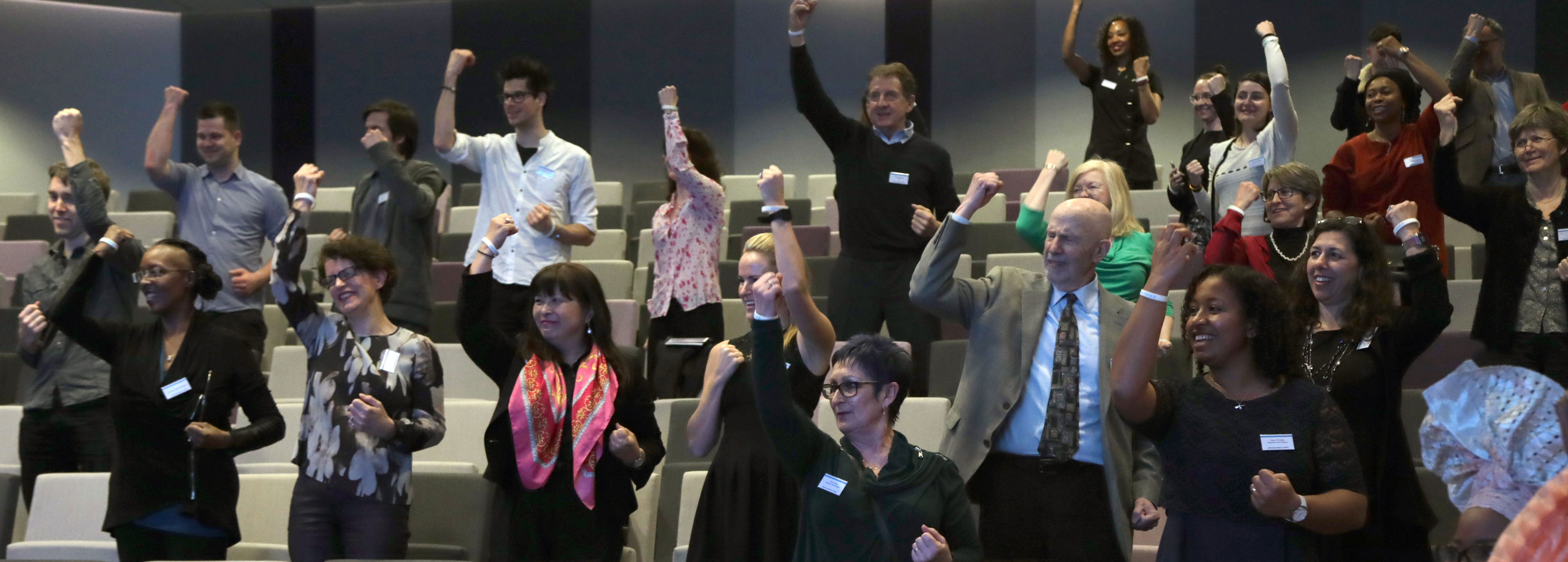Like so many, I was deeply saddened by hearing the news that Justice Ruth Bader Ginsberg had passed. She was sworn in to the U.S. Supreme Court on Aug. 10, 1993. Aug. 10th just happens to be my birthday. She passed away on Sept, 18, the same day my dad passed three years ago. My dad deeply admired Justice Ginsberg and all she accomplished, particularly around issues of equality and healthcare. Just like her, he also was a bit notorious. Against the odds, he championed a woman he worked with, a researcher and professor, back in the 1970s. We often forget that women’s rights got voted in by male leaders that saw the value of gender equity. No woman voted for women to get the vote.
My father early on in my life role modeled for me how important it is to have men involved in creating gender equity. He had gone from teaching at Rutgers University to a small, liberal arts college in Pennsylvania in the 1970s. He was excited about being a part of their pre-med program, helping to mold the next generation of doctors. He got to know a female chemistry professor in his department and came to deeply respect her. She was a collaborative colleague, highly skilled, and brought a wealth of knowledge to the classroom. She had been passed over for tenure several times. My dad decided to be an advocate for her.
His first visits were to members of the tenure committee. They said that there were male professors, family men, that needed tenure more. They made excuses, tried to downplay her research and her contributions. He didn’t back down. He eventually spoke at a college-wide faculty meeting on her behalf. I wish I could tell you that she was tenured and that his advocacy didn’t hurt his standing with the college’s leadership, but I can’t. They were never going to acknowledge that as a woman, she had earned and deserved to be tenured. Because my dad had publicly spoken up, the administration and many of his colleagues thought he had disrespected the institution.
Dad went on to a corporate research job. His friend and colleague went on to a state university in the midwest. She was finally tenured there. I know how pleased dad was to hear the news. The choice he made led to him giving up something he loved, but I know he never regretted his decision to support her.
He taught me so much about what it means to stand up and speak out when something is wrong or someone is being treated unfairly. There are no guarantees that being a voice for change won’t hurt you or mean a sacrifice of something you care about. But he couldn’t be silent. He wasn’t arguing in front of the Supreme Court, but he was arguing in front of colleagues that did not share his viewpoint, or wouldn’t admit to it. He saw his female colleague and someone that wasn’t getting the support or the recognition they deserved. He knew it wasn’t right.
I would venture to guess that being passed over time and again for tenure, no matter how much you contribute, how much your students highly rate you, how many go on to medical school, took a toll on her mental and physical health. It also hurt her financially. Being one of only a handful of female professors in the sciences, it had to be pretty lonely.
Too many women today still come up against gender bias, regardless of their education, their experience and/or their skill level. No matter that they contribute at the same level as others on their team. They still have to deal with being passed over because they are of “childbearing age” while men get more financial support when they are “family men.”
If employees, no matter the background, are marginalized, are made to stay quiet, no “wellness” program will solve for a workplace that includes some and excludes others. The foundation of health and resilience in a workforce is both physical and psychological safety. It requires leadership at all levels that role models not just healthy behavior for themselves, but inclusiveness for all members of their team. It requires understanding the difference between equal treatment and equitable treatment.
In the current health crisis, having a workforce that is healthier clearly has an impact on the bottom line. Having a workforce that has the resilience to adjust to sudden changes, persevere through crisis with a sound judgement, and quickly innovate, when required, is why employee health and wellbeing needs to be more than an afterthought.
Key to making that happen is understanding the connection between health and wellbeing and an employee’s ability to do their job. It’s particularly important to employees in leadership or management at any level. However, when all the leaders look the same, have many of the same experiences, they often they miss out on showing leadership to everyone on their team. Too often they, just because it is not their experience, end up excluding the very person they may need to solve a problem. And the person that is excluded withdraws, burns out, and may eventually leave. It also takes a toll on their mental and physical health, so costing the company and impacting the bottom line.
If your leadership looks pretty similar in your organization, maybe it’s time to ask more questions:
Who needs to know about someone being excluded? If you are in a leadership position, do employees feel that they are free to talk to you about these kinds of issues?
How is your leadership training incorporating outdated cultural norms and bias that could harm the organization?
How are leaders being educated about health challenges that may be different across the gender arc so they can better manage their team and get people to resources?
Once there is a solution agreed on, how do employees find out about it?
Too often workplace health and wellbeing is only viewed as physical health or dealing with mental health and wellbeing challenges. Workplace “wellness” may be just a focus on saving enough for retirement. But real health and wellbeing is directly connected to whether or not someone is truly part of a team, heard and valued, treated fairly. Combine a work culture where that happens and the health and wellbeing initiatives will be so much more impactful. It will drive a stronger financial future for the company. The company will attract more top talent from all backgrounds.
RBG and my dad understood the value of personal health. They also understood the impact of opening up space for others so they could use their voice, so they could be included and contribute. They understood how that can impact having a healthy team or community.
What will your organization do to better include people from all diversity backgrounds? How will you make sure that everyone has the chance to contribute and be recognized fairly? As we rethink how work gets done through all our next normals, now is a good time to rethink how work culture is impacting employee health and wellbeing. By making this a priority, your organization will be better prepared to address all the next normals and protect the bottom line.
Mim Senft, Motivity Partnerships and Global Women 4 Wellbeing (GW4W) www.gw4w.org


